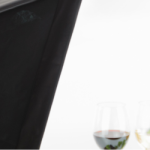Exploring the diverse world of photography, understanding the myriad types of lenses in photography is fundamental. These lenses, critical tools for photographers, encompass various types: prime, zoom, wide-angle, telephoto, and macro lenses. Each lens type serves distinct purposes, altering perspectives and uniquely capturing subjects.
In this blog, we will delve into the intricacies of types of lenses in photography, highlighting the best lens for photography needs, and providing insights on essential considerations when selecting a camera lens. Let’s sharpen our knowledge on lenses and deepen our expertise in the art of photography. Go through AAFT online’s photography program to know everything about photography.
Table of content
Why is a Good Lens Required in Photography
Types of Lenses in Photography
Best Lens for Portrait Photography
Best Lens for Wildlife Photography
Best Lens for Street Photography
Best Lens for Wedding Photography
Best Lens for Product Photography
What to Consider When Choosing a Camera Lens
Why is a Good Lens Required in Photography?
There are several types of lenses in photography, and a good lens plays a pivotal role in photography for several reasons:
- Image Quality: A quality lens can significantly impact image sharpness, contrast, and overall clarity. It ensures that the captured images retain detail and precision, contributing to high-resolution photographs.
- Versatility and Creativity: Different lenses offer varying focal lengths, apertures, and capabilities. This versatility allows photographers to explore diverse perspectives, from wide-angle vistas to close-up shots, fostering creativity and enabling them to convey their artistic vision effectively.
- Low Light Performance: Quality lenses often have wider maximum apertures, enabling better performance in low-light conditions. This capability facilitates shooting in dim environments without compromising image quality.
- Reduced Distortions and Aberrations: Superior lenses tend to have fewer distortions, chromatic aberrations, and other optical flaws, ensuring that the captured images are clean, free from unwanted artifacts or distortions.
- Investment in Longevity: A good lens is an investment in the long run. Quality lenses tend to hold their value over time, providing consistent performance and durability, making them a worthwhile investment for photographers.
In essence, a good lens is essential in photography as it significantly influences the overall quality of images, grants creative flexibility, and contributes to the artistic expression of the photographer.
Types of Lenses in Photography
Understanding focal lengths in photography is crucial for choosing the right lens to capture the desired shot. Focal length determines the field of view and magnification of a lens, influencing the style and composition of your photographs. Here’s a guide outlining various focal length ranges and their associated lens types, along with their typical uses in photography:
| Focal Length | Lens Type | Common Use |
| 4mm – 14mm | Fisheye | Abstract and Creative |
| 14mm – 35mm | Wide Angle | Landscape and Architecture |
| 35mm – 85mm | Standard | Street, Travel, and Portraits |
| 85mm – 135mm | Short Telephoto | Street Photography and Portraiture |
| 135mm+ | Medium Telephoto | Sports, Wildlife, and Action |
| 300mm+ | Super Telephoto | Distant Sports, Nature, Astronomy |
| 35mm – 200mm | Macro | Close-up Photography |
This table offers insights into different types of lenses in photography, their associated lens categories, and the typical photographic applications for each range.
Best Lens for Portrait Photography
For portrait photography, lenses with focal lengths between 85mm and 135mm are considered ideal. Here are some options:
- 85mm f/1.4 or f/1.8 Prime Lens: These lenses offer a flattering perspective, creating a natural look and beautiful background blur (bokeh). They are versatile and great for various portrait styles.
- 105mm f/1.4 or f/1.8 Prime Lens: This focal length provides a bit more reach, allowing for tighter framing while maintaining excellent bokeh and sharpness.
- 70-200mm f/2.8 Zoom Lens: This zoom lens offers flexibility, enabling both close-up shots and capturing subjects from a distance. It’s a popular choice for professional portrait photographers due to its versatility.
Each of these lenses provides excellent sharpness, beautiful background blur, and the ability to isolate the subject effectively, making them great options for portrait photography.
Best Lens for Wildlife Photography
For wildlife photography, lenses with longer focal lengths and good optical performance are essential to capture distant subjects without disturbing them. Here are some top choices:
200-500mm or 150-600mm Telephoto Zoom Lens: These lenses provide excellent reach and flexibility. They offer a wide focal range, allowing you to capture distant wildlife while still having the option to zoom out for broader scenes.
300mm or 400mm Prime Lens: Prime lenses with longer focal lengths offer exceptional image quality and superior sharpness. They’re ideal for capturing wildlife at a distance, and their wide apertures help in low-light conditions.
100-400mm Telephoto Zoom Lens: This lens strikes a balance between reach and versatility. It’s a popular choice among wildlife photographers for its ability to cover a range of focal lengths while maintaining good image quality.
Consider factors like your specific wildlife photography needs, budget, and the weight/portability of the lens when selecting the best one for you.
Best Lens for Street Photography
For street photography, a versatile lens that offers flexibility, good image quality, and is inconspicuous can be ideal. Here are some recommended options:
- 35mm f/1.8 or f/2 Prime Lens: A 35mm prime lens is a popular choice for street photography due to its versatility. It offers a wide field of view, great for capturing scenes with context while allowing for environmental portraits.
- 50mm f/1.8 or f/1.4 Prime Lens: A 50mm prime lens is another excellent choice. It offers a slightly tighter perspective than a 35mm lens, allowing for more focused shots while still being versatile on the streets.
- 24-70mm f/2.8 Zoom Lens: This zoom lens covers a range of focal lengths, making it adaptable for various street photography situations. It allows you to switch between wider angles and moderate telephoto shots.
These lenses provide excellent image quality, good low-light performance, and are often compact and discreet, making them suitable for capturing candid moments and everyday life on the streets. Choose based on your preferred shooting style and the type of street scenes you intend to capture.
Best Lens for Wedding Photography
Wedding photography often demands versatility and the ability to capture different moments beautifully. Here are some recommended lenses for wedding photography:
- 24-70mm f/2.8 Zoom Lens: This lens is a workhorse for wedding photographers. It covers a versatile range of focal lengths, from wide-angle for group shots and capturing the venue, to mid-range for portraits, and even slightly tighter shots for details.
- 70-200mm f/2.8 Zoom Lens: A telephoto zoom lens is essential for capturing candid moments from a distance without interrupting the ceremony. It’s excellent for portraits and capturing emotions without being intrusive.
- 50mm f/1.4 or f/1.8 Prime Lens: A fast prime lens like a 50mm offers excellent low-light performance and creates stunning portraits with beautiful background blur (bokeh). It’s perfect for capturing intimate moments and details.
- 85mm f/1.4 or f/1.8 Prime Lens: Another great choice for portraits during weddings. An 85mm lens provides a flattering perspective and exceptional bokeh, ideal for capturing the couple and individual portraits.
Consider a mix of these lenses to cover various aspects of a wedding day, from wide shots to intimate moments, ensuring you’re prepared to capture every special moment.
Best Lens for Product Photography
For product photography, achieving sharpness, detail, and accurate representation of the products is crucial. Here are some recommended lenses:
- Macro Lens (60mm – 100mm): A macro lens is excellent for capturing intricate details and textures of small to medium-sized products. Lenses in the 60-100mm range provide a comfortable working distance and superb close-up capabilities.
- Prime Lenses (50mm – 85mm): Standard prime lenses offer versatility for product photography. A 50mm or 85mm prime lens provides sharpness and natural perspectives, ideal for capturing larger products or for situations where a tighter frame is preferred.
- Tilt-Shift Lens: Tilt-shift lenses offer advanced control over perspective and focus. They allow for precise adjustments, beneficial when shooting reflective products or when precise control over the plane of focus is required.
- Zoom Lens (24-70mm or 24-105mm): A mid-range zoom lens offers versatility and can be suitable for larger products or shooting in confined spaces. It allows you to adjust focal length for different product sizes and shooting environments.
Consider the specific needs of your product photography, such as the size of the products, the desired field of view, and the level of detail required, to choose the most suitable lens.
What to Consider When Choosing a Camera Lens
When selecting a camera lens, several factors should influence your decision:
Focal Length: Determine the focal length based on your photography needs. Wide-angle lenses (less than 35mm) are suitable for landscapes and architecture, while telephoto lenses (above 70mm) are ideal for wildlife or sports photography. Standard lenses (around 50mm) offer a natural field of view for various purposes.
Aperture (f-stop): The aperture affects depth of field and low-light performance. Lower f-stop numbers (e.g., f/1.4) indicate wider apertures, allowing more light and better performance in low-light conditions. They also create a shallower depth of field, useful for portraits and artistic shots.
Lens Compatibility: Ensure the lens is compatible with your camera’s mount. Different manufacturers have specific mounts, and not all lenses fit all cameras.
Image Stabilization: For handheld shooting, especially with telephoto lenses or in low-light conditions, consider lenses with built-in image stabilization to reduce blur caused by camera shake.
Purpose and Style: Choose lenses that suit your photographic style and intended use. Macro lenses for close-ups, prime lenses for sharpness and low-light, or zoom lenses for versatility.
Budget: Quality lenses can be an investment. Consider your budget and weigh the cost against the lens’s features and the value it offers for your photography.
Reviews and Recommendations: Research reviews, user experiences, and expert recommendations to understand the lens’s performance, image quality, and suitability for your needs before making a purchase.
By considering these factors, you can make an informed decision when selecting a camera lens that aligns with your specific photography requirements and preferences.
Conclusion
Understanding the nuances of different types of lenses in photography is crucial for every photographer. From wide-angle to telephoto, each lens type offers distinct advantages in capturing various subjects and styles. Considering factors like focal length, aperture, and purpose when choosing a lens empowers photographers to elevate their craft. Whether it’s the versatility of a zoom lens or the artistic depth of a prime lens, the right choice significantly impacts the outcome of your photography. By delving into the types of lenses in photography and considering these essential aspects, photographers can skillfully navigate the vast array of lenses available, enhancing their ability to tell stories through captivating visuals.















